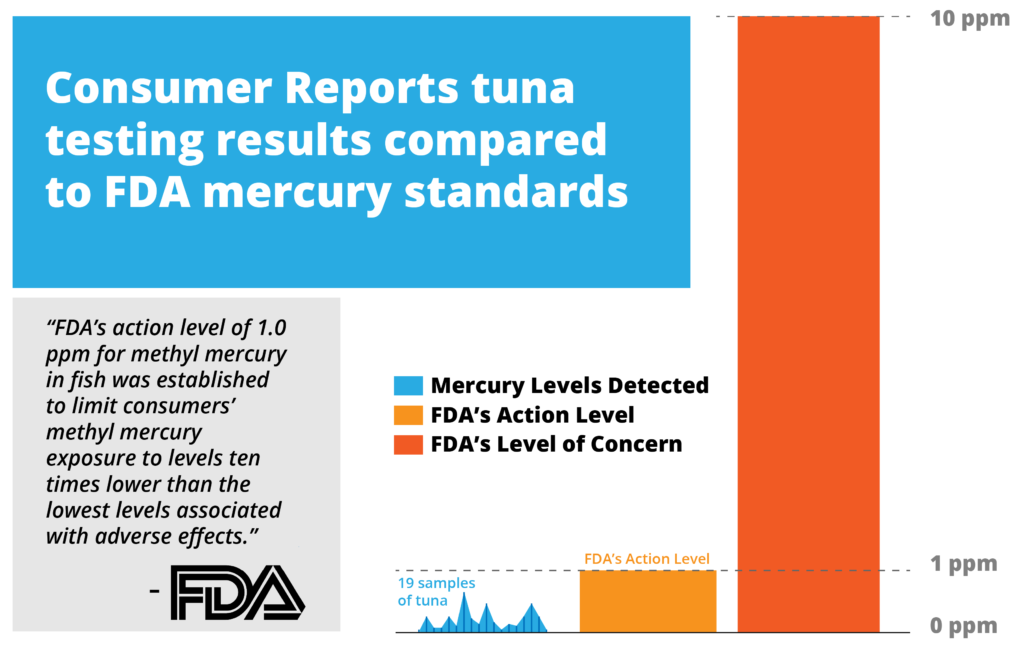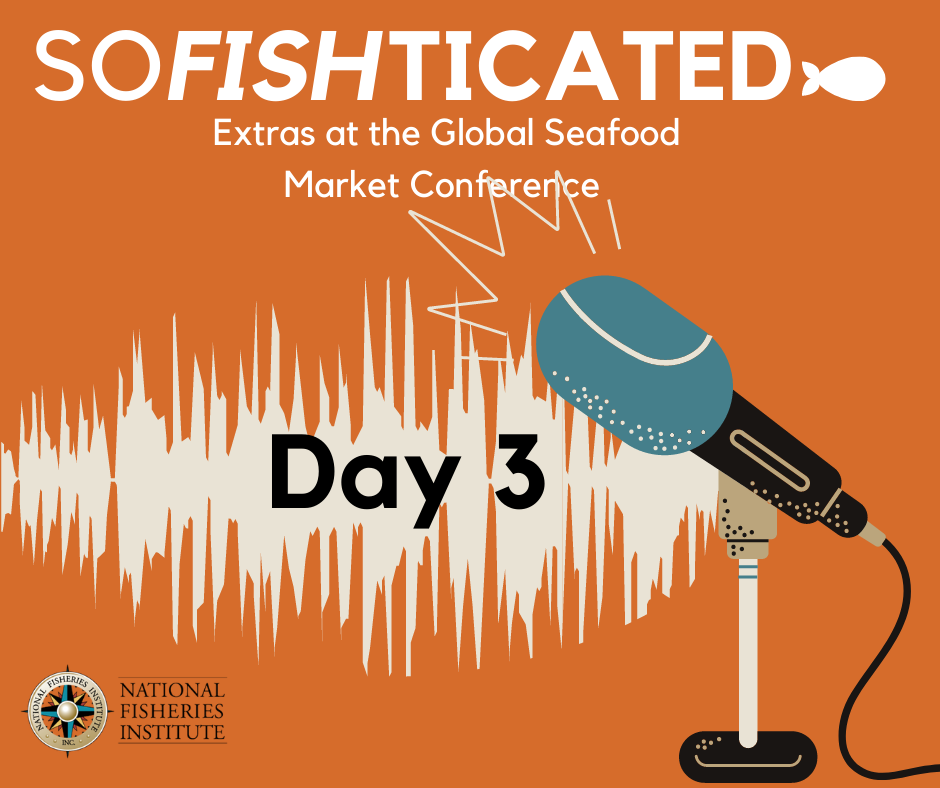All posts by NFI Media
Greenpeace Releases New… Blah, Blah, Blah
Reaching into its bag of retread tricks, Greenpeace— for the hundred millionth time — is releasing a “Tuna Retailer Scorecard” that no consumers will pay attention to. The thinly veiled fundraising solicitation that went out today pithily titled, “Message from Greenpeace” contains just two links. One to a list of ranked retailers and the second to a page titled, “Donate to Greenpeace USA For a Better Future!” Notice the exclamation point; that means it’s important.
This time the group has ginned up a reworked “Tuna Retailer Scorecard” that’s based on human rights violations and environmental impact, ultimately, homogenizing and marginalizing two actually important issues into one cash grab.
But, spoiler alert, retailers and consumers alike don’t need to even read it to know what it says—all 16 retailers except one (which earned a “D”) got an “F.” That’s right, no one is doing enough for human rights or the environment except Greenpeace.
Here’s how it works; Greenpeace will get a few donations here and there, then it will reach out to its big institutional donors and say the new score card is creating fundamental change. Next, it will generate another score card that shows marginal improvement, and claim credit for said “progress.” Finally, in classic Greenpeace style, it will then rinse and repeat for a few more cycles and eventually go away after accomplishing essentially nothing but…fundraising.
An endless loop of nothing new; lather, rinse, repeat.
We Did Consumer Reports Work for Them
How Worried Should You Be About Consumer Reports?
When we challenged reporter, Lauren Kirchner and her team at Consumer Reports, to release all their mercury-in-canned-tuna testing data and put it in perspective with the Food and Drug Administration’s (FDA) Action Level and “Level of Concern,” we thought it was a pretty simple request. Apparently, it wasn’t because rather than a full clarification of the facts we got… nothing but crickets.
So, in order to help folks understand exactly what Consumer Reports found we were able to piece together the raw data from 19 of the 30 tests conducted as part of its How Worried Should You Be About Mercury in Your Tuna? article. The results are below and speak for themselves.
Do those findings surprise you? Perhaps as much as Consumer Reports was surprised when CBS Mornings Anchor, Tony Dokoupil, sat through a four-minute segment on their recent report before declaring, “Well, I will not be abstaining, I like my tuna with pickles, mayo, olive oil, and lemon. All of it in there, a little dill, salt, and pepper; it is delicious.”
Hmm… not quite the fearmongering response they’d hoped for?
But wait, there are more surprises. Reporter, Lauren Kirchner, was once a Pulitzer Prize finalist for her work related to something called algorithmic bias. This basically means systematic and repeatable errors in how you crunch numbers can create unfair or inaccurate outcomes. A fancy way to say, cooking the books. Dare we say, when you look at those numbers and you read Consumer Reports recommendations to avoid or curtail tuna consumption the books seem kinda cooked. Alert the irony police.
Oh, and one more thing. Were we the only ones who noticed Consumer Reports bury this little nugget, laundered in as a piece of quiet “optimism?” Eighty percent of the mercury levels measured were, “actually lower than the average mercury levels the FDA measured from 1990 to 2010.”
Perhaps it’s time for greater editorial review at Consumer Reports. Or maybe it’s long overdue? You be the judge, but one thing is for sure, you don’t have to judge whether your canned tuna is safe to consume.
Really, Consumer Reports? Show Us The Numbers
Consumer Reports new story titled “How Worried Should You Be About Mercury in Your Tuna” is a quintessential example of a news outlet writing its conclusion first and then reverse engineering the story to fit it.
Consumer Reports says it tested 30 cans of tuna for mercury and was so concerned with the levels it found, recommended consumers limit or avoid the affordable, heart and brain-healthy protein. However, they never share what those levels were in the context of the Food and Drug Administration’s (FDA) mercury restrictions and or levels of concern.
Do you know why we suspect they didn’t do that? Here’s our hypothesis – because NONE of the samples they tested came even remotely close to exceeding the FDA’s Action Level and weren’t even in the universe of what the FDA considers a level of harm.
We saw some of Consumer Reports’ results, and in one set of tests, the highest level of mercury found in a “light” can of tuna was .58 ppm, and the highest level of mercury found in an “albacore” can was .66 ppm. The FDA’s Action Level, or the limit for mercury in fish, is 1.0ppm. Neither of these levels begin to even approach this limit and are completely safe to consume.
However, more importantly, we note that Consumer Reports never even talks about the Action Level and also never explains that the Action Level includes a 10-fold safety factor:
“FDA’s Action Level of 1.0 ppm for methyl mercury in fish was established to limit consumers’ methyl mercury exposure to levels ten times lower than the lowest levels associated with adverse effects.”
Cans that include tuna with mercury levels of .58ppm or .66ppm are nowhere near the absolute lowest levels FDA itself associates with “adverse effects.” In a bout of journalistic malpractice Consumer Reports never explains this. And it’s not because Consumer Reports didn’t know this, oh they did, because we told them on January 11, 2023. They just chose to leave this vital information out of the report, opting instead to peddle their obscured findings in search of exactly what they’re getting today; sensational headlines. An embarrassing failure of journalistic ethics or a strategic deception? You decide.
We have an idea. Why don’t author, Lauren Kirchner and the Consumer Reports team, publish a blinded chart that shows all 30 of their samples in parts per million of mercury found, as compared to FDA’s 10-fold safety factor and then let consumers decide if they’re concerned about mercury in canned tuna. Or better yet — just send NFI the test results and we’ll do it for you. You’ve got our email… we can wait.
Consumer Reports Loves a Good Scare Story
NFI has learned that Consumer Reports magazine is preparing to release a “story” that documents its efforts to test mercury in canned tuna. A story the outlet has repeatedly produced over the years:
Dating all the way back to 2014, the Food and Drug Administration (FDA) blasted the magazine saying its report, “focus(ed) exclusively on the mercury levels in fish without considering the known positive nutritional benefits attributed to fish. As a result, the methodology employed by Consumer Reports overestimates the negative effects and overlooks the strong body of scientific evidence published in the last decade.”
Despite that admonishment, they’re at it again — taking precious time away from rating vacuum cleaners and air fryers to play an unqualified role in making public health recommendations.
However, here’s the real part of the narrative that will not surprise you. NFI found out Consumer Reports was testing cans of tuna in early January, and we reached out to them to be a resource. Not surprisingly, they didn’t sound thrilled to hear from us.
From the findings, we were privy to, we noted to Consumer Reports that the mercury levels they apparently found do not raise consumption concerns. Additionally, to suggest precautions to consumers based on those results would be hyperbolic and borders on embarrassing, tabloid journalism.
We pointed out that in the sample of results we saw, it appeared the highest level of mercury found in a “light” can was .58 ppm and the highest level of mercury found in an “albacore” can was .66 ppm. The FDA’s Action Level, or the limit for mercury in fish is 1.0ppm. Neither of these levels begin to even approach this limit and are completely safe to consume.
However, more importantly, we explained to Consumer Reports that to be totally accurate they would need to put these numbers in complete context with the FDA’s own explanation of the 1.0ppm Action Level and then explain the fact that the FDA’s 1.0ppm level includes a 10-fold safety factor:
“FDA’s Action Level of 1.0 ppm for methyl mercury in fish was established to limit consumers’ methyl mercury exposure to levels ten times lower than the lowest levels associated with adverse effects.”
— Food and Drug Administration
Cans that include tuna with mercury levels of .58ppm or .66ppm are nowhere near the absolute lowest levels FDA itself associates with “adverse effects.” Any reporting by Consumer Reports that suggests otherwise and does not include a thorough explanation of the FDA’s safety factor would be disingenuous at best and or deceptive at worse.
The report is scheduled to come out tomorrow Thursday, February 9th. Keep in mind, at that point Consumer Reports will have been fully aware of the FDA’s testing metric and threshold for concern for nearly a month. Deceiving readers by omitting accurate and scientific FDA perspective in search of sensational headlines is more than an embarrassing failure of journalistic ethics it is, simply put, wrong.
Join us at the NFI Future Leaders Alumni Networking Event in Boston
Hear the SoFISHticated Extras from the final day at GSMC
SoFISHticated: Meet Lisa Wallenda Picard
SoFISHticated co-hosts, Richard Barry and Melaina Lewis, sit down with Lisa Wallenda Picard, so members can meet NFI’s new president and CEO ahead of the 2023 Global Seafood Market Conference.
2024 Global Seafood Market Conference Registration is Open
This We Know for Sure: Eating Fish Benefits Heart Health
Seafood Strongly Associated with Heart Health
Heart disease is the leading cause of death in the U.S., so it’s critical to use clear and actionable language every chance we get about how people can help keep maintain heart health. One of the foods most strongly associated with reduced heart disease risk is fish. It is estimated that low seafood intake is responsible for about 84,000 American lives lost to heart disease each year, which makes seafood deficiency the second-biggest dietary contributor to preventable deaths in the U.S.
The Science on Heart Health & Seafood Is Clear
Here are some examples of language that clearly communicate the rock solid seafood and heart health science:
- “The American Heart Association recommends eating 2 servings of fish (particularly fatty fish) per week. A serving is 3.5 ounce cooked, or about ¾ cup of flaked fish. Fatty fish like salmon, mackerel, herring, lake trout, sardines and albacore tuna are high in omega-3 fatty acids. ” – AHA
- “Twice a week, make seafood—fish and shellfish—the main protein food on your plate. Seafood contains a range of nutrients, including healthy omega-3 fats. According to the 2010 Dietary Guidelines for Americans, eating about 8 ounces per week (less for young children) of a variety of seafood can help prevent heart disease.” – USDA ChooseMyPlate
Why Is Fish So Good for Heart Health?
Researchers believe the unique combination of healthy fats in seafood play a big role in its powerful protection of heart health, but that’s not all seafood has to offer. Fish, as a whole food, has a lot going on. Take a look here at all the nutrients in a single filet of salmon, for example:
- Protein
- Selenium
- Iron
- Vitamin D
- Omega-3 fatty acids
These nutrients and more make seafood such a well-rounded superfood. As Alice Lichtenstein, director of the Cardiovascular Nutrition Laboratory at the Tufts School of Nutrition explains, choosing fish “replaces major contributors of saturated fat, such as hamburgers or a slice of quiche.”
What about Supplements?
Therefore, it’s not entirely surprising that the omega-3 supplement science doesn’t exactly replicate the benefits shown by seafood studies. But it is surprising that the coverage of the supplement science fails to emphasize the well-established benefits of fish as a whole food.
The lead researcher of a recent supplement study concluded, “Although these two supplements do not prevent atrial fibrillation, recent studies have suggested that lifestyle modifications such as maintaining a healthy weight, controlling blood pressure, and moderating alcohol intake may lower risk of atrial fibrillation…We need to continue to educate the public on ways to lower their risk as well as search for new ways to prevent this condition.” All good suggestions, and let’s not forget the one that got us looking into fish oil supplements in the first place, fish!
Eat Seafood 2-3 Times Each Week For Heart Health
As scientists sort out the supplement story, people need to know there is a powerful – and delicious – way to unequivocally help their heart health ready and waiting in their fridges, freezers, and pantries right now.
Coronavirus and Food: Media Continues to Bury the Lead
Global health organizations continue to find there is no evidence of food or food packaging being associated with the transmission of the virus that causes COVID-19.
Virus Surviving on Surfaces Is Not New
We continue to see poor reporting, and worse headlines, about studies that show SARS-CoV-2 can survive on surfaces, including food. This is not new information – like most viruses, the novel coronavirus can survive on different surfaces at different temperatures for a certain period of time.
Headlines Inaccurately Implicate Salmon
The latest reporting of the issue covers research from China. The study has not been published or peer-reviewed, but that did not stop Bloomberg or The Hill from reporting the findings, which is that SARS-CoV-2 could survive for 8 days on salmon kept at 39 degrees Fahrenheit.
The fact that SARS-CoV-2 survived on chilled salmon does not indicate that salmon is a carrier of the coronavirus. The study could have looked at the virus surviving on a plastic bag, a grain of rice, or a shoe. Again, it’s not a new discovery that the virus can survive on surfaces in the right environment. However, there continues to be no evidence that the survivability of the virus on food surfaces, like salmon in this particular case, can transmit the coronavirus to someone who eats or handles that product. Yet, headlines like today’s in Bloomberg (“Salmon May Harbor Infectious Coronavirus For a Week, Study Shows”) suggest to readers, especially those who don’t read the full article, that salmon is in some way uniquely positioned to possibly transmit the coronavirus, which is inaccurate.
COVID is Not a Foodborne Illness
The Food and Drug Administration says, “Unlike foodborne gastrointestinal (GI) viruses like norovirus and hepatitis A that often make people ill through contaminated food, SARS-CoV-2, which causes COVID-19, is a virus that causes respiratory illness and not gastrointestinal illness, and foodborne exposure to this virus is not known to be a route of transmission.”
Global Health Experts Confident Food is Safe
Reporters looking for a hyperbolic headline and a good scare story have repeatedly failed to reference myriad platinum-level food safety organizations that explain how food and package surfaces can be hospitable to a virus but not perpetuate infection. Here are just a few:
- “Despite the many billions of meals consumed and food packages handled since the beginning of the COVID-19 pandemic, to date there has not been any evidence that food, food packaging or food handling is a source or important transmission route for SARS-CoV-2 resulting in COVID-19.”
International Commission on Microbiological Specifications for Foods
- “True then. True still today. There is no evidence of food or food packaging being associated with the transmission of the virus that causes COVID-19.”
Frank Yiannas
Deputy Commissioner
Food Policy & Response
U.S. Food & Drug Administration
- “People should not fear food, or food packaging or processing or delivery of food.”
Mike Ryan
Head of Emergencies Programme
World Health Organization
- “Currently, there is no evidence to suggest that handling food or consuming food is associated with COVID-19.”
Centers for Disease Control and Prevention
For more about seafood safety during the pandemic please visit this website with FAQs and resources.














